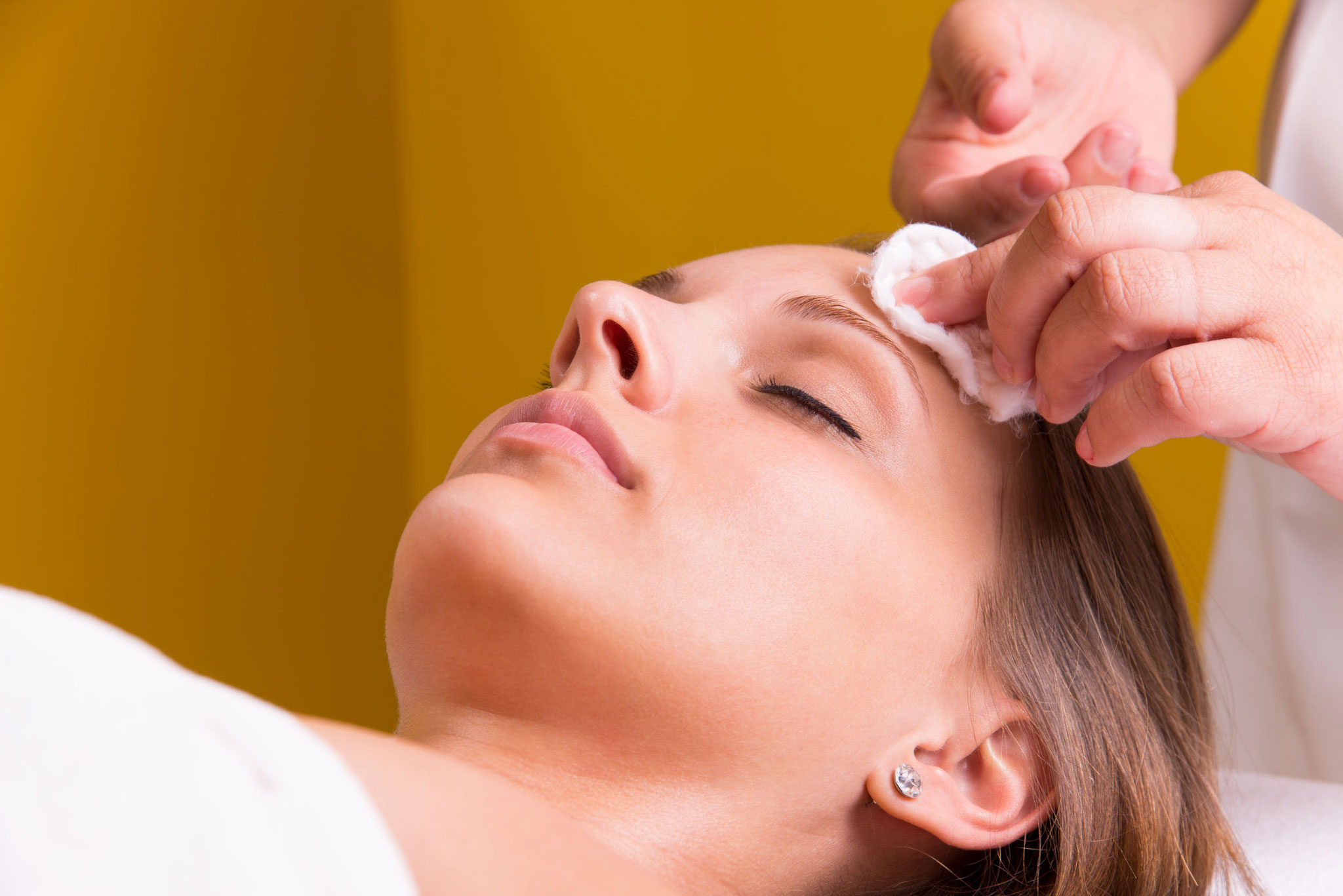Chemical Peels
The skin ages in many ways during the aging process, namely a decrease in the quantity and quality of collagen reduces, loss of elasticity, accumulation of dead cells on the surface of the skin, and increased hyperpigmentation.
Chemical peeling is the chemical method of exfoliation and skin destruction. The aim is to alter the appearance of the skin through the regeneration of new epidermis. Ingredients used in the peels help to encourage neocollagenesis, increase cell turnover, reduce existing hyperpigmentation and temporarily reduce excessive skin oils. Therefore chemical peels are used for anti-aging,to treat acne, rosacea, irregular pigmentation and scars. A course of chemical peels will lead to long term results, and are offered in conjunction with home skincare regimes.
The major chemicals used are:
- Alpha hydroxy acids, such as lactic, glycolic, malic and mandelic.
- Salicylic acid and other beta hydroxy acids
- Jessner’s solution is a mix of 14% lactic acid, salicylic acid 14%, resourcinol and phenolic acid
- Trichloracetic acid (TCA) and phenol
Pre-Peel Preparation
Skin preparation with appropriate skincare products 2 weeks before the first peel will maximise and enhance results by preparing and strengthening the skin and minimise any irritation. One should also avoid electrolysis, waxing, hair-removal creams and laser hair removal for 7 days before a chemical peel. Arrive for the treatment with a clean, make-up free face.
Post-Peel Advice
Depending on the chemical peel used, aftercare advice may vary, however the following will serve as a guide:
- Skin may be pink/red, feel tight and itchy
- Skin should not be washed and creams should not be applied for at least 6 hours following the peel
- Skin should remain make-up free for 12 hours
- Excessive exercise and the use of saunas, steam rooms and swimming pools should be avoided for 7 days after the peel
- Flaking, peeling skin must not be rubbed, picked or peeled off to avoid scarring and post inflammatory hyperpigmentation
- Sun protection 30 – 50 should be worn daily following a peel and sun exposure avoided until the skin has recovered
- Use of vitamin C serum can enhance results of skin peels and provide additional UV protection in conjunction with sunscreen
- Use the recommended skin products to supplement the treatment and enhance the outcome
Contraindications
- Previous negative reaction to similar treatments
- Allergic to any of the ingredients
- Roaccutane use within the past 6 – 12 months
- Plastic surgery procedure performed in the last 4 months in relevant treatment site
- Hair removal methods such as laser, waxing, or depilatories for 7 days.
- Use of non-electric razor on skin on day of procedure
- Open wounds, cuts, abrasions or impetigo
- Active shingles in area to be treated. Active herpes simplex outbreak including fever blisters or coldsores in the area to be treated
Pregnant/Lactating - Body Dismorphic Disorder or unrealistic expectations
- Inability to follow post procedure care home protocol, including sunscreen use
| Chemical Peel Price List | |
|---|---|
| From | £150 |
